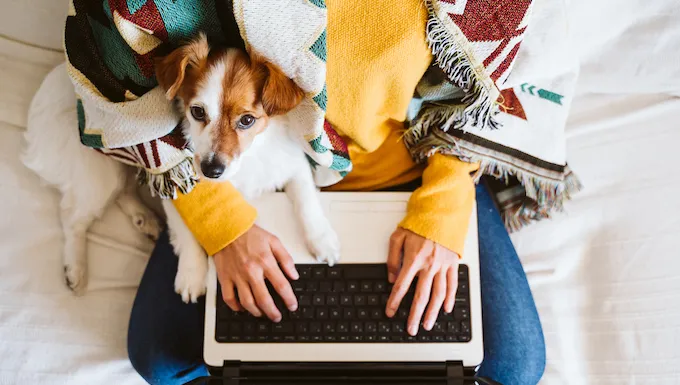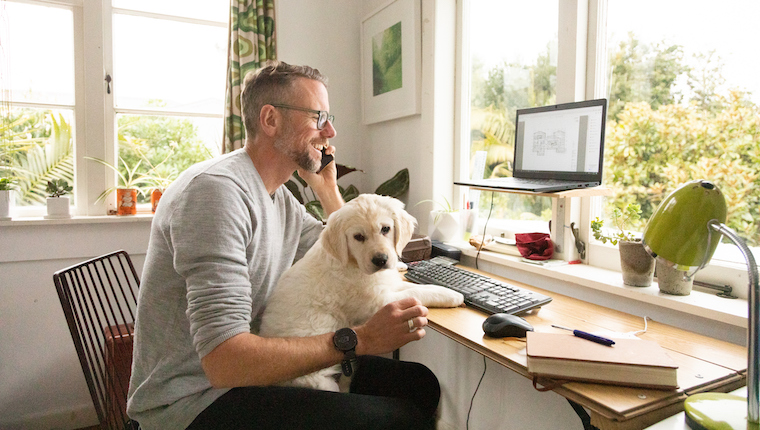
EEK! Your employer wants you working back in the building and you know your dog will stress-out about staying home alone. Your pup is used to having you by his side and they’re going to need some stress support when you Return to Office (RTO). Easing your dog away from 24/7 human access is a process and works best in small steps.
According to the American Kennel Club (AKC), dogs that suffer from separation anxiety may exhibit anxious, problematic or destructive behaviors. They miss their people, and may be afraid of being alone, worried by outside noises, or simply bored out of their doggie minds. Fear and frustration fuel behavioral issues like constant barking, potty problems, and aggressive chewing or digging — which are the ways our dogs are wired to yell, “HELP!”.
Fearful, frustrated pups need coping skills. Part of pup-parenting (especially for a Covid puppy) is creating the time and space to ease our dogs away from total dependence on our presence by creating structure that will help them regulate anxiety.
De-stressing Ideas to Try
The following tips help dogs that have never been away from their humans. They also work as re-entry assistance for older dogs that have experienced pre-pandemic ‘alone time’ when their humans went off to work.
Exercise. LOTS of Exercise.
Create a daily ‘walk your dog before work’ habit, and try to squeeze in another walk when you get home. Alternatively, the AKC recommends 15 minutes of strenuous play in the backyard. Your dog will quickly learn and rely on their exercise schedule, and will be much more willing and able to ‘settle’ when you must leave for work.
Make a Safe Spot.
Your dog needs a place where they can feel relaxed and protected. Purchase a large crate, furnish it with a cozy liner and drape a blanket over the top. Try playing National Public Radio (NPR), which offers chill music and soothing voices. Leave the crate door open so your dog can investigate at will, and periodically throw in a chew treat or interactive toy to make the space intriguing.
Learning to be comfortable in a closed crate space will help your dog relax. Planning to use doggie daycare? You will want to make sure that your dog is fine using a crate. Daycare dogs may get short breaks from group play in an individual crate – which can distress a pup not used to being confined.
Practice ‘Away-ness’.
Walk the dog, leave the house for a bit, then return. When you are able, spend longer periods away from home. As RTO approaches, run through the morning routine as if you’re getting ready for the office. Make sure your dog is also on their new schedule. Your pup should know exactly what to expect from RTO mornings.
Doggie Daycare.
Plan ahead if you would like your pup to participate in group play while you’re at work! There are likely several daycare options in your area, and all will have rules, restrictions, and reservation lists. If your dog has had very little interaction with other dogs, start with a puppy class or beginner obedience class first, so your pup learns group behavior.
Don’t Give up!
None of these ideas are quick tricks; they take time, scheduling, and practice. Every dog has their own quirks, personality, and stress level. You may have to try several options to find the solution that works to keep your dog happy while you’re not at home.









